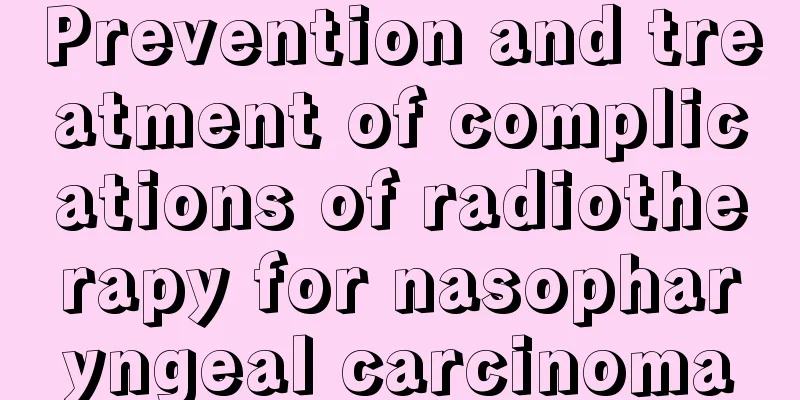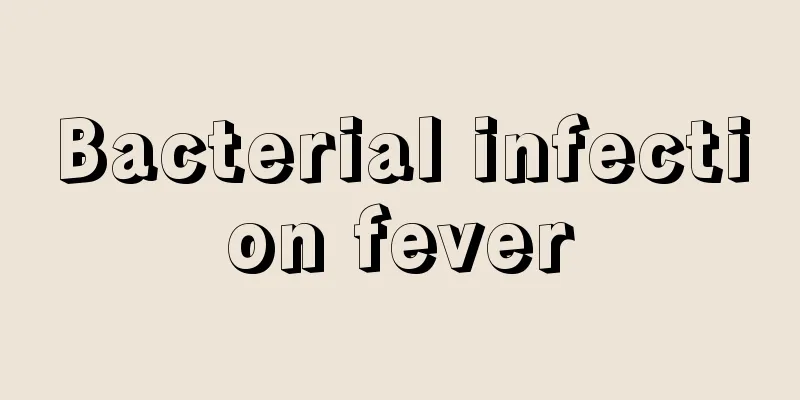Prevention and treatment of complications of radiotherapy for nasopharyngeal carcinoma

|
Prevention and treatment of complications of radiotherapy for nasopharyngeal carcinoma? In order to improve the quality of life of patients and alleviate or reduce the late damage of radiotherapy, timely and correct treatment of complications during radiotherapy and guidance of functional exercise after radiotherapy are more important. The following is a summary of the complications of radiotherapy for nasopharyngeal carcinoma and their prevention and treatment measures. 1Hearing loss, deafness 1.1 Clinical manifestations While radiotherapy for nasopharyngeal carcinoma can improve symptoms such as ear plugging, tinnitus, and hearing loss caused by tumor compression, it can also cause radiation otitis media and middle ear effusion. Especially when re-irradiated, the damage is more serious. The early clinical manifestations are mainly ear pain, stuffy ears, and ear canal exudation. Those with concurrent infection will have pus discharge, tinnitus, imbalance, and abnormal sensitivity to noise. Several months to several years after radiation, with the progressive degeneration and fibrosis of blood vessels and connective tissues, it can lead to tympanic membrane perforation, ear canal adhesion and atresia, gradual necrosis of cochlear hair cells, and sclerosis of ossicles. Therefore, the late clinical manifestations are sensorineural, conductive, or mixed deafness. According to literature reports, the incidence of deafness can reach 55% 2 years after radical radiotherapy for nasopharyngeal carcinoma. 1.2 Prevention and control measures First, minimize the radiation dose to the ear. Second, when radiation otitis media ruptures the tympanic membrane and discharges, keep the drainage unobstructed to avoid dirty water and dirt, and use antibacterial ear drops in the early stage. Third, use 3% hydrogen peroxide to flush the external auditory canal, keep the local area clean, and remember that the pressure should not be too high. Fourth, do not dig the ear canal at will to reduce exogenous infection of the middle ear. Fifth, use 1% ephedrine drops in the nose during or after radiotherapy and insist on flushing the nasopharynx every day to remove nasopharyngeal secretions and reduce the blockage of the Eustachian tube. Sixth, treat acute and chronic inflammation of the nasopharynx in time to prevent bacteria from passing through the open Eustachian tube to cause mastoid infection. Seventh, keep the external ear clean, use sterile cotton balls to block the external auditory canal when bathing or swimming, strengthen self-exercise, pay attention to keeping warm, prevent colds, and reduce the chance of infection. 2 Radiation myelopathy 2.1 Clinical manifestations It usually occurs within 1 to 3 years after radiotherapy. In mild cases, it manifests as an electric shock or numbness radiating from the neck to the limbs when lowering the head or raising the legs. In severe cases, it can develop from bottom to top, from sensory impairment to movement impairment, leading to limb paralysis. 2.2 Prevention and control measures First, try to use new radiotherapy technologies, such as intensity-modulated conformal radiotherapy, to reduce the amount of radiation to the spinal cord. Second, it usually lasts for 4 to 6 months and then disappears on its own. Third, radiation spinal cord injury is routinely treated with steroids, supplemented by dehydration (mannitol) and vitamins. Fourth, traditional Chinese medicine uses Chinese medicine to promote blood circulation, remove blood stasis, promote blood circulation, and nourish the liver and kidneys. 3Nasal adhesions, atrophic rhinitis 3.1 Clinical manifestations After irradiation of the nasal cavity and sinuses, the mucosa becomes congested, swollen, rotten and bleeding, and a white film forms, causing the nasal concha to adhere closely to the nasal septum. In addition, the nasal passages are filled with sticky purulent or purulent secretions, resulting in obstruction of the sinus opening, leading to post-radiotherapy complications such as nasal adhesions, nasal atresia, sinusitis, and atrophic rhinitis. The cumulative incidence of nasal adhesions and sinusitis after radiotherapy for nasopharyngeal carcinoma is about 30% and 90% in one and a half years. The clinical manifestations are persistent nasal congestion with runny nose, decreased or loss of smell after radiotherapy. Although nasal adhesions after radiotherapy do not directly affect the prognosis, they significantly reduce the quality of life, and symptoms such as mouth breathing, dizziness, mental depression, insomnia, and fatigue occur. 3.2 Prevention and control measures First, during and after radiotherapy, the nasopharyngeal cavity should be alternately flushed with 0.3% hydrogen peroxide and normal saline twice a day. Second, appropriate use of vasoconstrictor nasal drops should be used to improve nasal drainage. |
<<: Differences between symptoms of nasopharyngeal carcinoma and allergic rhinitis
>>: Can multiple bone metastases of nasopharyngeal carcinoma be cured?
Recommend
The efficacy and function of Anemarrhena asphodeloides, giving you the most complete analysis
Traditional Chinese medicine treatment methods ar...
How to repair a broken lipstick?
If the lips become chapped, it is usually caused ...
What harm does losing your temper do to your body?
In daily life, many people will feel bad and want...
What harm does drinking too much water do to the human body?
On hot summer days, people usually feel thirsty e...
What tests are done for early screening of colorectal cancer
What tests are done for early screening of colore...
How to treat radiation encephalopathy?
Speaking of radiation encephalopathy, I believe m...
Can I smoke when I have a cold
Nowadays, more and more people smoke, and many pe...
Are there any benefits to washing your face with orange peel?
Orange is a fruit rich in vitamins and has a rela...
Briefly describe the 4 early symptoms of brain cancer
The early clinical symptoms of brain cancer are m...
How to ripen peaches
Peach is a very common fruit in our life. There a...
What are the clinical manifestations of hamartoma
Hamartoma is a tumor that can cause great harm to...
What is the standard staging of gallbladder cancer
In recent years, gallbladder cancer has become on...
Can I go to the toilet in the morning during the physical examination?
We all have the experience of going to the hospit...
Pathological staging of bladder cancer
Bladder cancer is one of the more serious cancers...
What are the symptoms of thyroid tumor
The symptoms of thyroid adenoma vary, and this di...









